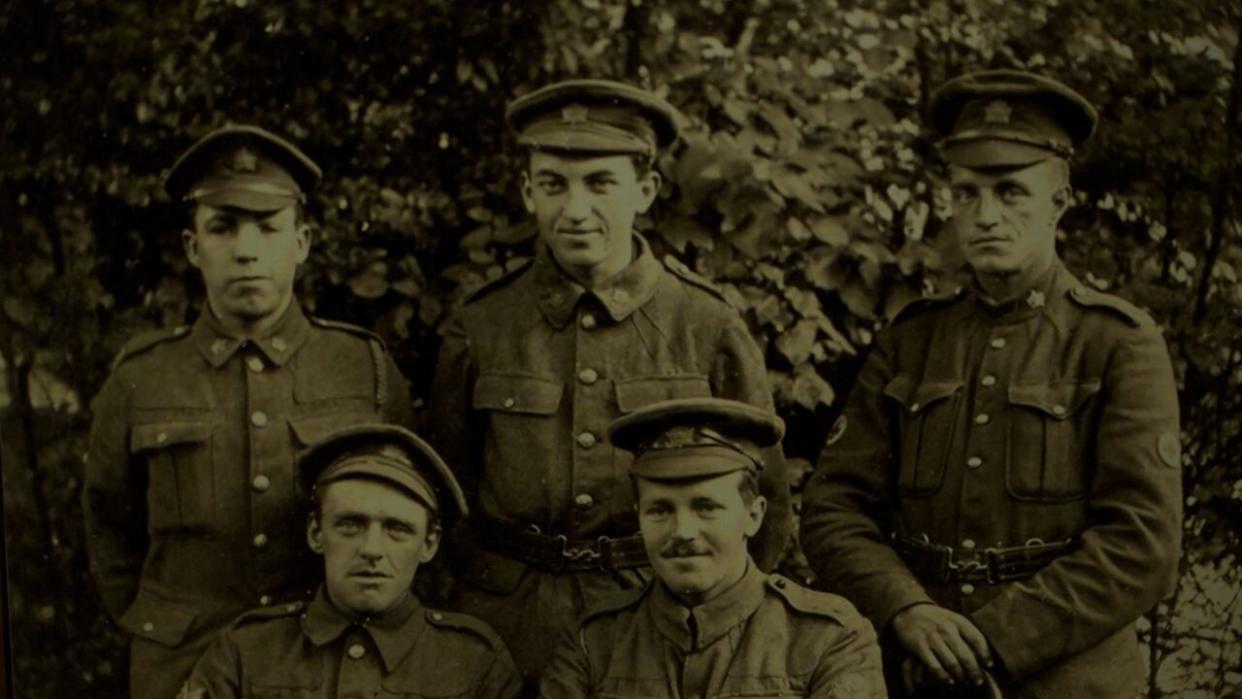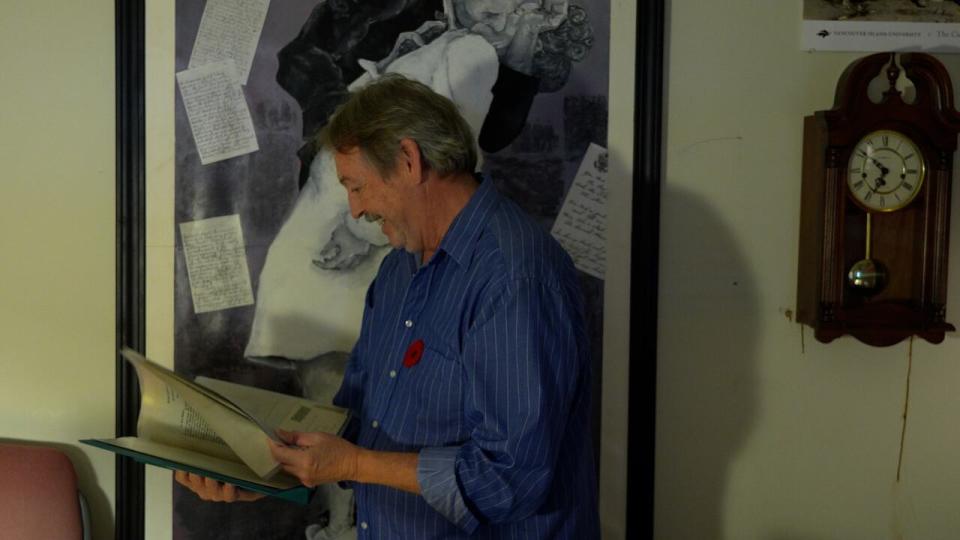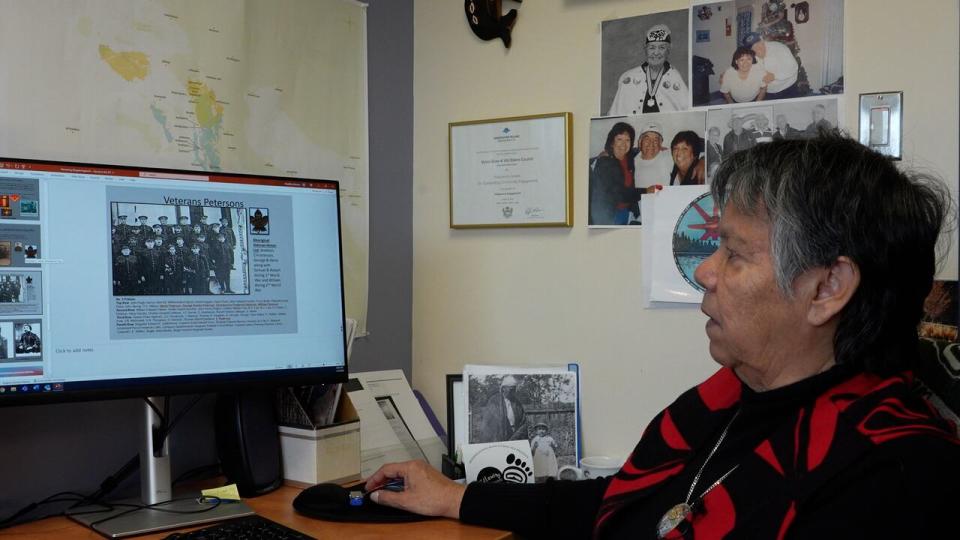Soldiers with ties to Nanaimo honoured in digital memorial across the city

From Nov. 1 until Remembrance Day, the Nanaimo Remembers project will be on display throughout the city, sharing more about the soldiers who served in the First and Second World Wars beyond their names on the cenotaph.
"It's very difficult, I think, for the community to go to the cenotaph, they look at those names, they see them carved in stone. And yet, in a way ... they're meaningless," said Stephen Davies, director of Vancouver Island University (VIU)'s Canadian Letters and Images Project, who helped organize Nanaimo Remembers.
"They have no context by which to understand their connection to the community. So this is a way to bring those individuals back into the community."
The project, a collaboration between VIU and other community partners, will be shown on screens in public spaces such as the library, the Nanaimo Museum, VIU, Beban Park, and Oliver Woods Community Centre. It will also be available on VIU's YouTube channel.

Stephen Davies is pictured in his office at Vancouver Island University, browsing a binder of letters and images from soldiers from the World Wars. (Claire Palmer/CBC)
The video shows the names of over 200 soldiers with ties to Nanaimo, about a 111-kilometre drive north from Victoria, along with some information about who they are — their rank and battalion, when they died and at what age, where they were buried, and their occupation.
The soldiers' names were obtained from the Dallas Square Cenotaph in the downtown area.
Davies says Nanaimo Remembers grew out of a desire to localize a project VIU participated in for many years — The World Remembers, a tribute to soldiers across the world who died in the First World War.
Davies also does work with the Canadian Letters and Images Project, where he helps archive and preserve belongings of soldiers who fought in the First and Second World Wars.
That project, Davies says, is now in its 24th year, and allows historians to tell stories about the war that don't often get talked about, as the items are often personal.
While people often think of veterans as older in age, reading letters and seeing photos is a reminder that these soldiers were often young adults, in their early 20s or even teenagers, he says.

Davies, at his desk, holds a letter written by a soldier to his sister. It's one of the items he is digitizing as part of the Canadian Letters and Images Project, where he helps archive and preserve belongings of soldiers who fought in the First and Second World Wars. (Claire Palmer/CBC)
"It's through their eyes, through their words. It's not myself, it's not a historian telling you what they thought. It's their actual thoughts," Davies said.
"Then we understand that those statistics, those names in the cenotaph, they had loves, they had lives, they had ambitions, they had dreams."
Remembering Indigenous veterans
The letters and images project's section on Indigenous soldiers was also enriched this year with research by VIU Elder-in-Residence, Geraldine Manson.
Manson has put together her own video — which is part of the Nanaimo Remembers project — that delves into the stories of Snuneymuxw veterans, whose contributions are often left out, she says.

Geraldine Manson, VIU's Elder-in-Residence, is shown working on a video that features Snuneymuxw veterans. (Claire Palmer/CBC)
"They deserve the same recognition as anyone else that went through what they went through," said Manson.
"And it's important for our younger generation to know that that was their great-grandfather, their great, great-uncle."
Manson says she hopes that one day there will be a cenotaph to honour Indigenous veterans on the Snuneymuxw cemetery, where they can hold their own ceremonies of remembrance.


